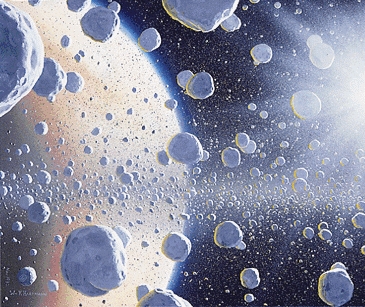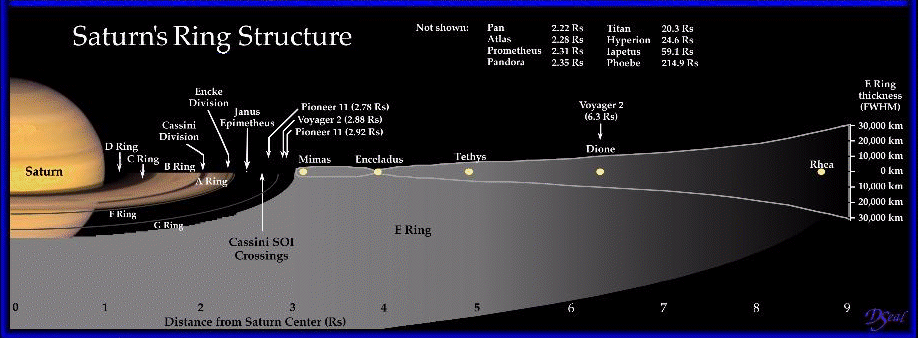In Class:
Question to Ponder
Which of the Galilean moons of Jupiter is least affected by tidal heating?
- a) Callisto
- b) Io
- c) Europa
- d) Ganymede
Saturn
- Not quite as big as Jupiter, and a lot less massive.
- density = 700 kg/m3 -- less than that of water ice.
- Because of lower mass, Saturn's interior is not compressed as much;
thus the average density is lower.
- Interior heat generation via "helium rain," where helium condenses into
droplets and falls with in the mostly hydrogen interior, releasing
gravitational energy.
- Less colorful upper atmosphere banding than in Jupiter, probably because
temperautres are considerably lower.
Saturn's Rings
- Leftover stuff that didn't fall into the planet or form into moons.

- Material is inside the Roche Limit, region where tidal forces are
sufficiently large to prevent gravitational accretion.
- Material cannot hold itself together purely via graviational attraction.
- Region extends outward approximately 2.5 times the radius of Saturn.
- Makes it very difficult for it to collect together into a moon.
- Instead, the material spreads out into a thin orbiting disk.
- Extends ~100,000 km, but is less than 100 m thick.
- Probably dynamically unstable, e.g., material falls into the planet on
~100 MYr timescales.
- That means that either 1) the rings are continually fed, perhaps by
moon collisions, or 2) the rings are ephemeral, and have not always been
present around Saturn.
- If 2) is correct, then we're just lucky enough to live when a large
amount of material is present in the rings; come back in 100 MYr and
there might be no ring.
- Divisions in the rings -- major ones labeled "Cassini" and "Encke" for
their discoverers.

|

![]()

![]()